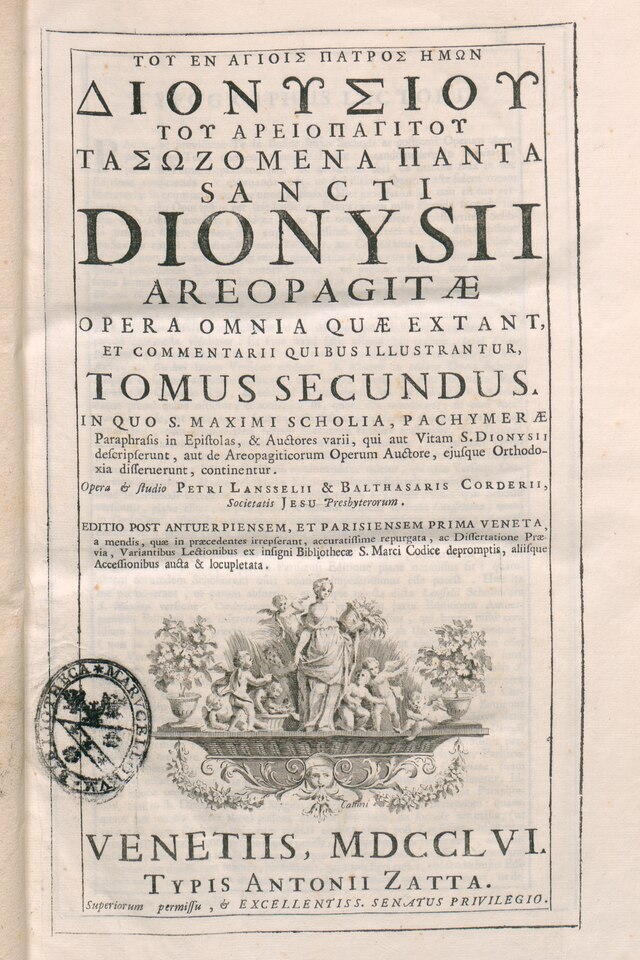Top Qs
Timeline
Chat
Perspective
Dionysius the Areopagite
Greek bishop and saint From Wikipedia, the free encyclopedia
Remove ads
Dionysius the Areopagite (/daɪəˈnɪsiəs/; Ancient Greek: Διονύσιος ὁ Ἀρεοπαγίτης Dionysios ho Areopagitēs) was an Athenian judge at the Areopagus Court in Athens, who lived in the first century. A convert to Christianity, he is venerated as a saint by multiple denominations.
Remove ads
Remove ads
Life


As related in the Acts of the Apostles (Acts 17:34), he was converted to Christianity by the preaching of Paul the Apostle,[2] being first stirred to Christian doctrine by Paul's sermon at the Areopagus:
Howbeit certain men clave unto him, and believed: among the which was Dionysius the Areopagite, and a woman named Damaris, and others with them.
After his conversion, Dionysius became the first Bishop of Athens,[3] though he is sometimes counted as the second after Hierotheus. He is venerated as a saint in the Catholic and the Eastern Orthodox churches. He is the patron saint of Athens and is venerated as the protector of judges and the judiciary. His memory is celebrated on October 3.[4]
Remove ads
Historic confusions
In the early sixth century the so-called Corpus Dionysiacum, a series of writings of a mystical nature, employing Neoplatonic language to elucidate Christian theological and mystical ideas, was ascribed to the Areopagite. Its author is now known as Pseudo-Dionysius the Areopagite.[5] A minority of scholars, including Romanian theologian Dumitru Stăniloae,[6] argue in favor of authenticity citing internal historical details and the existence of explicit citations of Dionysius predating Proclus by writers such as Dionysius of Alexandria and Gregory Nazianzus.[7] Even Proclus himself appears to cite an external authority for a euphemism ("flowers and supersubstantial lights") when the said verbiage is found explicitly in the Corpus Dionysiacum.[8]
Dionysius has been misidentified with the martyr Dionysius, the first Bishop of Paris. However, this mistake by a ninth-century writer is ignored and each saint is commemorated on his respective day.[9]
Remove ads
Modern references
In Athens there are two large churches bearing his name, one in Kolonaki on Skoufa Street, while the other is the Catholic Metropolis of Athens, on Panepistimiou Street. The pedestrian walkway around the Acropolis, which passes through the rock of the Areios Pagos, also bears his name.
Dionysius is the patron saint of the Gargaliani of Messenia, as well as in the village of Dionysi in the south of the prefecture of Heraklion. The village was named after him and is the only village of Crete with a church in honor of Saint Dionysios Areopagitis.
See also
- St. Dionysus Institute in Paris
- Early centers of Christianity#Greece
- Cathedral Basilica of St. Dionysius the Areopagite (a Roman Catholic church in Athens named after Dionysius the Areopagite)
- St Dionysius' Church, Market Harborough, UK
References
Further reading
External links
Wikiwand - on
Seamless Wikipedia browsing. On steroids.
Remove ads

